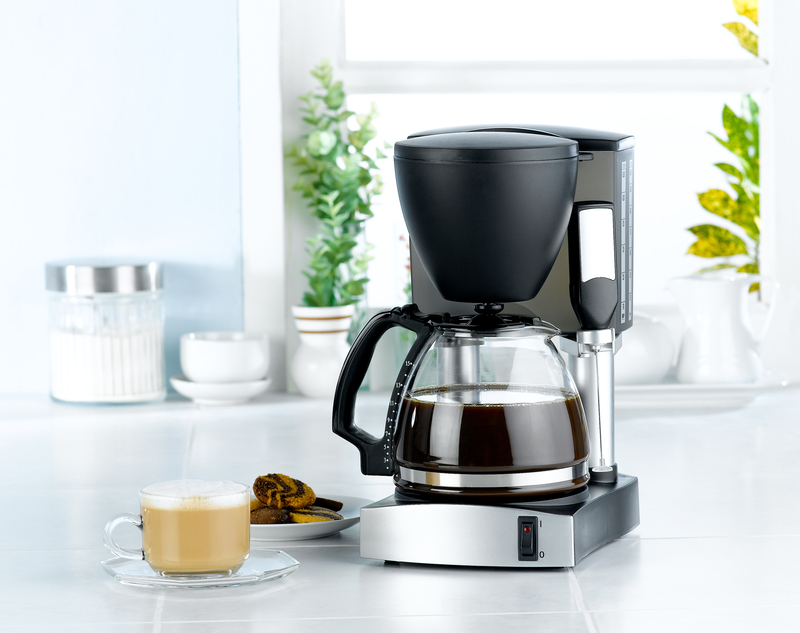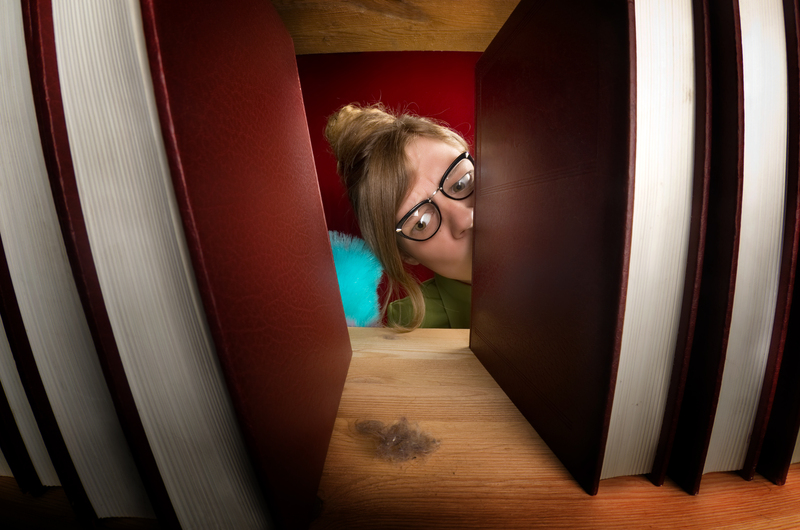Protecting the Lush Texture of Velvet Curtains During Washing
Posted on 01/06/2025
Protecting the Lush Texture of Velvet Curtains During Washing
Velvet curtains bring elegance, warmth, and a touch of luxury to any living space. Their sumptuous appearance and soft, tactile texture make them a coveted choice for both classic and modern interiors. However, their opulent nature comes with unique care requirements, especially during washing. Without proper precautions, velvet curtains can lose their lush texture and develop wrinkles, puckering, or even color fading. In this in-depth guide, discover every essential step and expert method on protecting the lush texture of velvet curtains during washing, ensuring they remain as magnificent as the day you bought them.
Understanding Velvet: The Key to Proper Care
Before exploring the specifics of velvet curtain care, it's crucial to understand what makes velvet such a unique and delicate material:
- Velvet is a woven fabric with a distinctive, dense pile that gives it its signature plush feel.
- It can be made from various fibers, including cotton, silk, polyester, and blends. Each fiber reacts differently to water and cleaning agents.
- The nap, or direction of the pile, creates the shimmery effect but is easily disturbed by harsh washing techniques.
- Moisture, agitation, or inappropriate drying can flatten or damage the pile, impacting the curtain's appearance and longevity.
To ensure the velvet curtain texture remains lush, following fabric-specific guidelines and gentle washing strategies is essential.

Should You Wash Velvet Curtains at Home?
Many wonder if machine washing velvet curtains at home is safe. The answer largely depends on the fiber type and the manufacturer's label:
- Check the care label: Some velvet curtains are specifically labeled as "dry-clean only," particularly silk or blended velvets.
- Polyester and cotton velvets are sometimes more forgiving and may permit hand-washing or gentle machine cycles.
- If in doubt, opt for professional cleaning to avoid irreversible damage!
Always follow the manufacturer's instructions. Ignoring care recommendations can result in shrinking, color loss, or a crushed pile.
Essential Steps Before Washing Velvet Curtains
1. Remove Dust and Surface Dirt
Velvet's thick texture can trap dust and debris. Removing surface dirt before washing will minimize abrasion and contamination during cleaning:
- Vacuum: Use a handheld vacuum with a soft brush attachment. Gently run it in the direction of the nap.
- Alternatively, shake out the curtains outdoors to dislodge loose dust.
- Spot clean visible stains with a mild detergent and a soft cloth before washing the entire curtain.
2. Conduct a Colorfastness Test
Color fading is a risk with any fabric, but especially velvet, which often features rich, saturated hues. To check for colorfastness:
- Dampen a white cloth with water and gently blot an inconspicuous area of the curtain.
- If the dye lifts onto the cloth, the color is not fast, and machine washing is not recommended.
- In such cases, opt for professional dry cleaning.
Best Practices for Washing Velvet Curtains
Hand Washing Velvet Curtains
Hand washing is the gentlest option for preserving the velvety texture of your curtains:
- Fill a basin or bathtub with cold water and a small amount of mild, non-alkaline detergent.
- Submerge the curtains loosely; avoid overcrowding.
- Gently agitate the water with your hands, never rub or wring the fabric.
- Let the curtains soak for 3-5 minutes.
- Drain the soapy water and refill with fresh, cold water. Rinse thoroughly, repeating until water runs clear.
Tip: If possible, add a splash of white vinegar to the rinse water. It helps remove residual detergent and enhances shine.
Can Velvet Curtains Be Machine Washed?
Machine washing is generally not recommended for velvet curtains made from delicate fibers. However, sturdier polyester or cotton velvets can sometimes be machine-washed, following these precautions:
- Use a mesh laundry bag to minimize agitation.
- Set the machine on a gentle "delicate" cycle with cold water.
- Use a small amount of mild, no-bleach detergent.
- Remove curtains promptly to prevent creasing.
Never use fabric softener or bleach, as these can degenerate the delicate nap and impact color vibrancy.
Drying Velvet Curtains: The Most Important Step
Air Drying Is Best
Proper drying is vital for protecting the lush texture of velvet curtains:
- Lay the washed curtains flat on a clean, dry towel. Gently roll the curtain and towel together to absorb excess moisture--don't twist!
- Unroll and position the curtain on a second, dry towel. Allow it to air dry flat, away from direct sunlight and heat sources.
- Avoid hanging velvet curtains while wet, as this may lead to stretching or misshaping the fabric.
Avoid Tumble Dryers
Never place velvet curtains in a dryer. Even on low settings, mechanical drying can flatten the nap, cause shrinkage, and produce stubborn creases.
Reintroducing Pile
Once velvet curtains are dry, gently brush the surface with a soft-bristled brush or a velvet upholstery brush. Always move in the direction of the pile to restore the fabric's signature sheen and depth. You may also use a clothes steamer held at a distance to perk up flattened areas but avoid direct contact that could leave water marks.
Ironing Velvet Curtains: Should You or Shouldn't You?
Direct ironing is never recommended for velvet fabrics. The intense heat and pressure can permanently flatten and damage the nap. If you notice persistent wrinkles:
- Hang the dry curtains in the bathroom and run a hot shower, allowing the steam to naturally loosen creases.
- Alternately, use a handheld garment steamer at a low setting, maintaining at least a 1-inch distance from the fabric.
- For best results, test on a small area before full-scale steaming.
Remember, patience is key--let the curtains hang for a day or two, and most wrinkles should fall out naturally thanks to the weight and gravity.
Preventative Velvet Curtain Care Tips
Frequent washing isn't necessary or recommended for velvet curtains. Instead, adopt these everyday maintenance habits for velvet curtain texture protection:
- Lightly vacuum curtains weekly to prevent dust buildup.
- Spot clean minor stains as soon as possible with a damp, not wet, soft cloth.
- Close curtains during peak sunlight hours to avoid color fading.
- Rotate curtain panels every few months for even wear and fading.
- If your home is smoky or humid, ventilate regularly to prevent odor or mildew.
When Professional Cleaning Is Essential
Sometimes, home cleaning simply isn't enough to maintain velvet's sumptuous texture. Call a professional cleaner for:
- Heavy staining, oily residue, or unidentified spots.
- Silk velvet or blended velvet curtains that could shrink or bleed in water.
- Antique or valuable draperies with sentimental or monetary worth.
- Large or very heavy curtains that are difficult to maneuver at home.
Professional services use specialized solvents and techniques designed to protect the lush velvet texture, preserving the curtain's value and beauty for years to come.
Common Mistakes When Washing Velvet Curtains
To protect velvet curtain texture during laundering, avoid these frequent errors:
- Using bleach, strong detergents, or fabric softeners.
- Aggressive wringing, twisting, or scrubbing of fabric.
- High spin cycles or hot water washing.
- Machine drying or direct exposure to heaters.
- Hanging wet curtains, especially in direct sunlight.
Remember: Gentleness, patience, and a methodical approach are the secrets to retaining velvet's luxuriant texture.

FAQs About Washing and Caring for Velvet Curtains
How often should velvet curtains be washed?
Velvet curtains rarely need full washing--once per year, or as needed for stains, is usually sufficient. Regular vacuuming and spot-cleaning will keep them looking fresh between washes.
Can steam cleaners be used on velvet curtains?
Yes, garment steamers are effective for freshening and de-wrinkling velvet curtains. However, maintain a safe distance and avoid over-saturating the fabric to prevent water marks or mildew.
What's the best way to deal with a flattened velvet pile?
Lay the curtain flat, then gently brush the pile with a soft-bristled brush or velvet brush, following the nap. Steam can help loosen fibers but always test on a small area first to avoid marks.
Is dry cleaning always the safest?
For silk velvet, blended velvet, or antique curtains, dry cleaning is generally the safest bet. For synthetic or cotton velvets, gentle hand washing may also be appropriate--always consult the care label!
Conclusion: Preserving Your Velvet Curtains' Beauty
Protecting the lush texture of velvet curtains during washing is a careful blend of preparation, gentle technique, and ongoing maintenance. While velvet requires more attention than standard drapery fabrics, the reward is enduring elegance and tactile beauty in your home. By following the key steps--dust removal, colorfastness testing, gentle washing, careful drying, and regular upkeep--your velvet curtains will continue to grace your living space with luxurious texture and vibrant color for many years to come.
Investing a little extra care not only preserves their appearance but also extends the life of these sumptuous, show-stopping window treatments.




